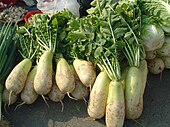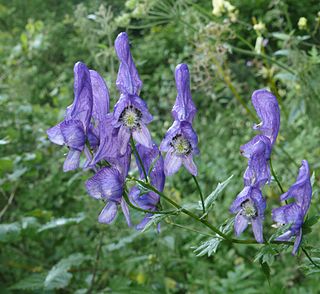
Aconitum, also known as aconite, monkshood, wolfsbane, leopard's bane, devil's helmet, or blue rocket, is a genus of over 250 species of flowering plants belonging to the family Ranunculaceae. These herbaceous perennial plants are chiefly native to the mountainous parts of the Northern Hemisphere in North America, Europe, and Asia, growing in the moisture-retentive but well-draining soils of mountain meadows.

Fumarioideae is a subfamily of the family Papaveraceae. It was formerly treated as a separate family, the Fumariaceae. It consists of about 575 species of herbaceous plants in 20 genera, native to the Northern Hemisphere and South Africa. The largest genus is Corydalis.

The peony or paeony is any flowering plant in the genus Paeonia, the only genus in the family Paeoniaceae. Peonies are native to Asia, Europe, and Western North America. Scientists differ on the number of species that can be distinguished, ranging from 25 to 40, although the current consensus describes 33 known species. The relationships between the species need to be further clarified.

Dicentra, known as bleeding-hearts, is a genus of eight species of herbaceous plants with oddly shaped flowers and finely divided leaves, native to eastern Asia and North America.
Bleeding heart may refer to:

The Papaveraceae are an economically important family of about 42 genera and approximately 775 known species of flowering plants in the order Ranunculales, informally known as the poppy family. The family is cosmopolitan, occurring in temperate and subtropical climates like Eastern Asia as well as California in North America. It is almost unknown in the tropics. Most are herbaceous plants, but a few are shrubs and small trees. The family currently includes two groups that have been considered to be separate families: Fumariaceae and Pteridophyllaceae. Papaver is the classical name for poppy in Latin.

Sanguinaria canadensis, bloodroot, is a perennial, herbaceous flowering plant native to eastern North America. It is the only species in the genus Sanguinaria, included in the poppy family Papaveraceae, and is most closely related to Eomecon of eastern Asia.

Dicentra cucullaria, Dutchman's britches, or Dutchman's breeches, is a perennial herbaceous plant, native to rich woods of eastern North America, with a disjunct population in the Columbia Basin.

Dicentra formosa is a flowering plant with fern-like leaves and an inflorescence of drooping pink, purple, yellow or cream flowers native to the Pacific Coast of North America.
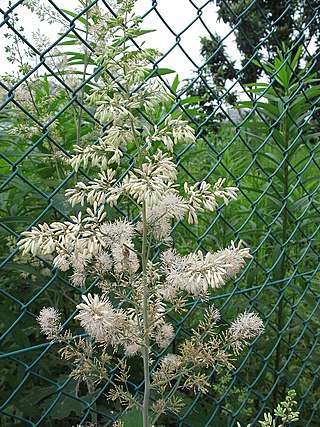
Macleaya cordata, the five-seeded plume-poppy, is a species of flowering plant in the poppy family Papaveraceae, which is used ornamentally. It is native to China and Japan. It is a large herbaceous perennial growing to 2.5 m (8 ft) tall by 1 m (3 ft) or more wide, with olive green leaves and airy panicles of buff-white flowers in summer.
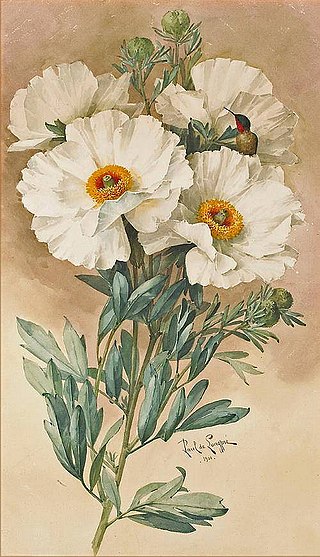
Romneya coulteri, the Coulter's Matilija poppy or California tree poppy, is a perennial species of flowering plant in the poppy family Papaveraceae. Native to southern California, USA, and Baja California, Mexico, it grows in dry canyons in chaparral and coastal sage scrub plant communities, sometimes in areas recently burned. It is a popular ornamental plant, kept for its large, showy flowers.

Eomecon is a monotypic genus of flowering plants in the poppy family containing the single species Eomecon chionantha. Its common names include snow-poppy and dawn-poppy. It is native to China.

Veratrum nigrum, the black false hellebore, is a widespread Eurasian species of perennial flowering plant in the family Melanthiaceae. Despite its common name, V. nigrum is not closely related to the true hellebores, nor does it resemble them.

Dicentra eximia is a flowering plant with fernlike leaves and oddly shaped flowers native to the Appalachian Mountains. It is similar to the Pacific bleeding-heart, which grows on the Pacific Coast. Dicentra eximia is a perennial herb in the Papaveraceae family.

Keman, is a Buddhist ritual decoration, placed hanging on the beam of the inner sanctuary before the enshrined Buddha, in the main hall of the temple.

Paeonia × suffruticosa is a name used for a group of cultivars of tree peonies that are the result of hybridisation with species exclusively belonging to the subsection Vaginatae. The common name used in China is mǔdān. Plants belonging to this group have been cultivated for millennia in China, initially only as a source of traditional Chinese medicine particularly the skin of its roots. Already early on the plant was also cultivated for its ornamental value, and it is highly revered in Chinese culture.
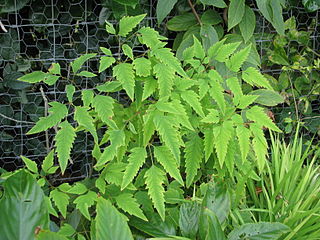
Ichtyoselmis macrantha is the only species in the genus Ichtyoselmis. It is a perennial plant growing from a long rhizome, native to woodland and glades at elevations of 1,500–2,700 metres (4,900–8,900 ft) in northern Burma and southern China.

Dactylicapnos is a genus of frost-tender perennial or annual climbers native to the Himalayas, northern Burma, central southern China, and northern Vietnam.

Corydalis nobilis, the Siberian corydalis, is a perennial plant native to Siberia, Xinjiang and Kazakhstan. It was introduced to Europe by Linnaeus, who had asked his friend Erich Laxmann for seeds of Lamprocapnos spectabilis, but was sent seeds of C. nobilis instead. Both Lamprocampnos and Corydalis are members of the family Papaveraceae, with seeds having an attached elaiosome that makes them attractive to ants, which disperse the seeds.

Hypecoum erectum is a species of annual herb in the poppy family native to China, Mongolia, and Russia. In China, the plant is commonly called 角茴香.






